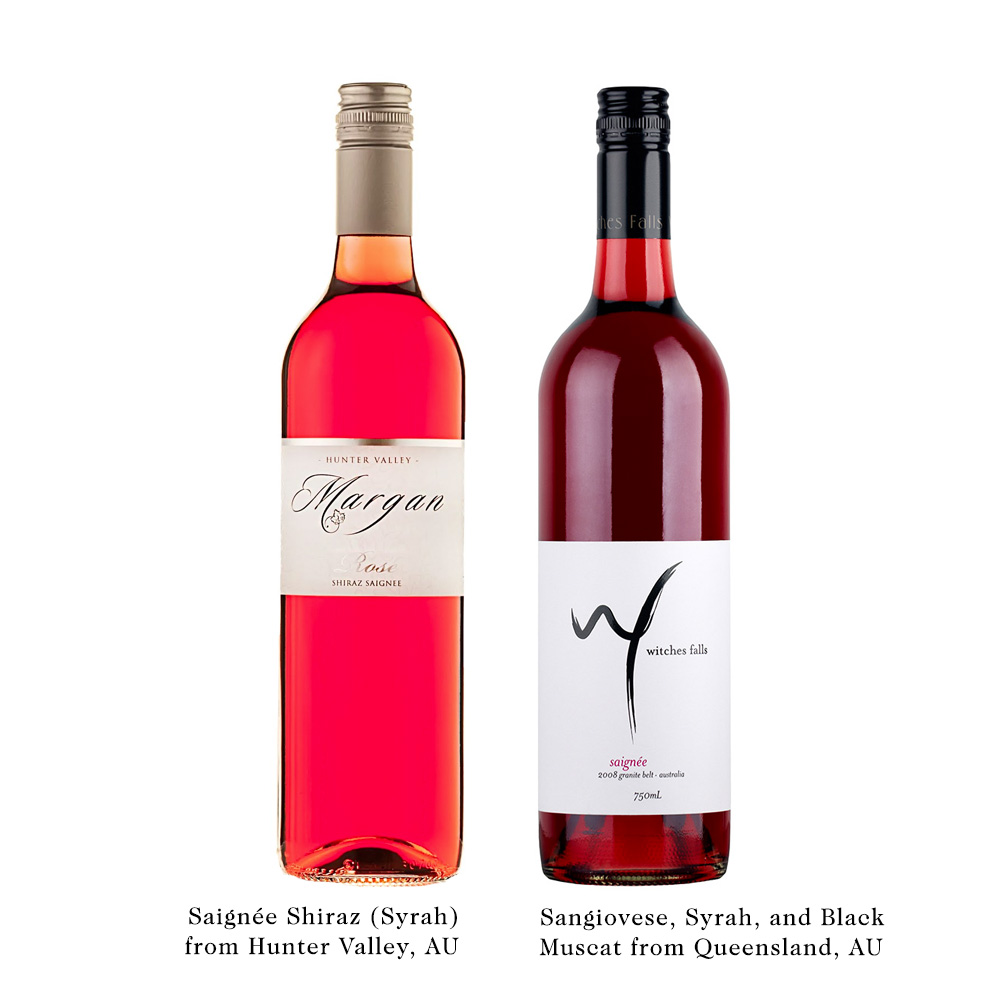Saignée (“sohn-yay”) means “to bleed,” and it also describes a method of rosé winemaking that involves “bleeding” off a portion of red wine juice after it’s been in contact with the skins and seeds. Saignée is considered a byproduct of red winemaking because its primary function is to increase the concentration of red wines. Still, Saignée is a unique style of rosé wine because it is so often bolder and darker in color than any other rosé wine. So, if you’re not a fan of traditional rosé, you might like Saignée because:
It’s bigger, darker, and stronger than other wimpy pink wines.
How Saignée Rosé is Made:
- Red wine grapes are picked when optimally ripe for red wine making.
- Grapes are crushed and put into a fermentation vat.
- After a short period of time (from 2 hours to 2 days) a portion of the juice is bled off.
- The Saignée rosé finishes fermenting on its own.
- Some producers age their Saignée rosé in oak barrels
A Few Saignée Rosé Wines to Try
Just about everywhere you find great red wine you’ll also find Saignée rosé. It usually accounts for 10% or less of a winery’s red wine production and thus, most of it is sold at the winery. Here are a few examples and how they taste.
-

Chinon Saignée
Chinon is a region in the Loire Valley that’s famous for its red Cabernet Franc wines and a small amount of Saignée rosé. These wines are usually tangy with aromas of wild strawberry, crushed rock, raspberry, and subtle notes of licorice or herbs. You’ll find them to be a bit more medium-bodied than many Loire rosé wines because they’re picked at optimal ripeness for red wine making (rosé is typically picked a little earlier). The fruit flavors are riper and the body is a little wider in the mouth.
Expect to Spend: ~$15
-

Cabernet Sauvignon Saignée
A great example of where you’ll find Cabernet Saignée is in the Napa Valley. Of the Saignée we’ve seen in from this area, they display a great deal of color, closer to blood red, as opposed to the “onion skin” color that’s popular with rosé today. The wines are much closer to red wines in terms of body, and producers might even incorporate the use of neutral oak aging to further intensify the flavor. Flavors include cherry, raspberry, pink peppercorn, and green bell pepper, often with a somewhat oily or waxy mid-palate.
The one challenge Napa Saignée rosé wine has is that the lack of acidity in the grapes often means the wines can become flabby quickly. For this reason, plan to drink them immediately. That said, some producers blend a portion of white wine or other rosé wines that were picked earlier with their Saignée so that the final products have higher acidity and will age a few years.
Expect to Spend: ~$20–$30
-

Syrah Saignée
Everywhere that makes great Syrah and GSM blends, from South Australia to the Southern Rhône, also makes some Saignée. This is one of the most intense rosé wines (along with Tempranillo rosé) that you’ll ever try. The color is usually pretty rich, from deep pink to pale purple. However, it’s not the color, but the aromas that will knock your socks off. Flavors of raspberry and cherry are enticing and sweet, leading into savory notes of white pepper and bacon. It’s like having a fruit waffle breakfast with bacon on the side all in one glass. It’s true, “wine must be fruity” lovers will hate this wine, but those of you who drink in dichotomy will be enamored.
Expect to Spend: ~$20–$30
Byproduct or Viable Product?
With the rosé boom, Saignée production has increased, but it’s also suffered some haters who believe the maceration method is the only “true” rosé. What makes this whole argument null, in our humble opinion, is that Saignée is similar to other wine byproducts, such as Grappa and Verjus, that create a new way to experience wine. It’s true that Saignée rosé wines are often bolder, darker, and more unctuous than popular rosé, but to certain drinkers this is the only rosé to drink. So, we cast our votes toward “Viable Product” and welcome yours below!

